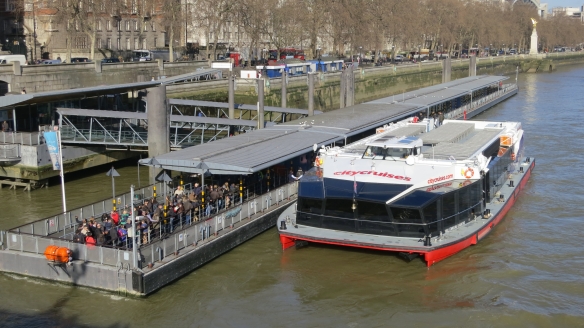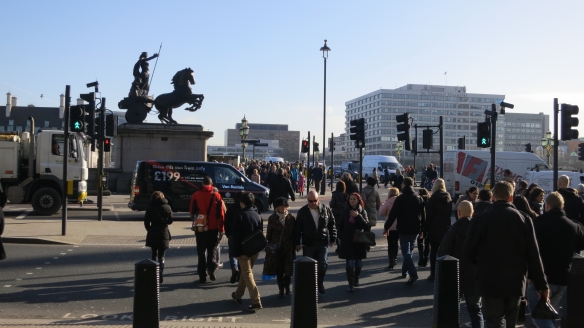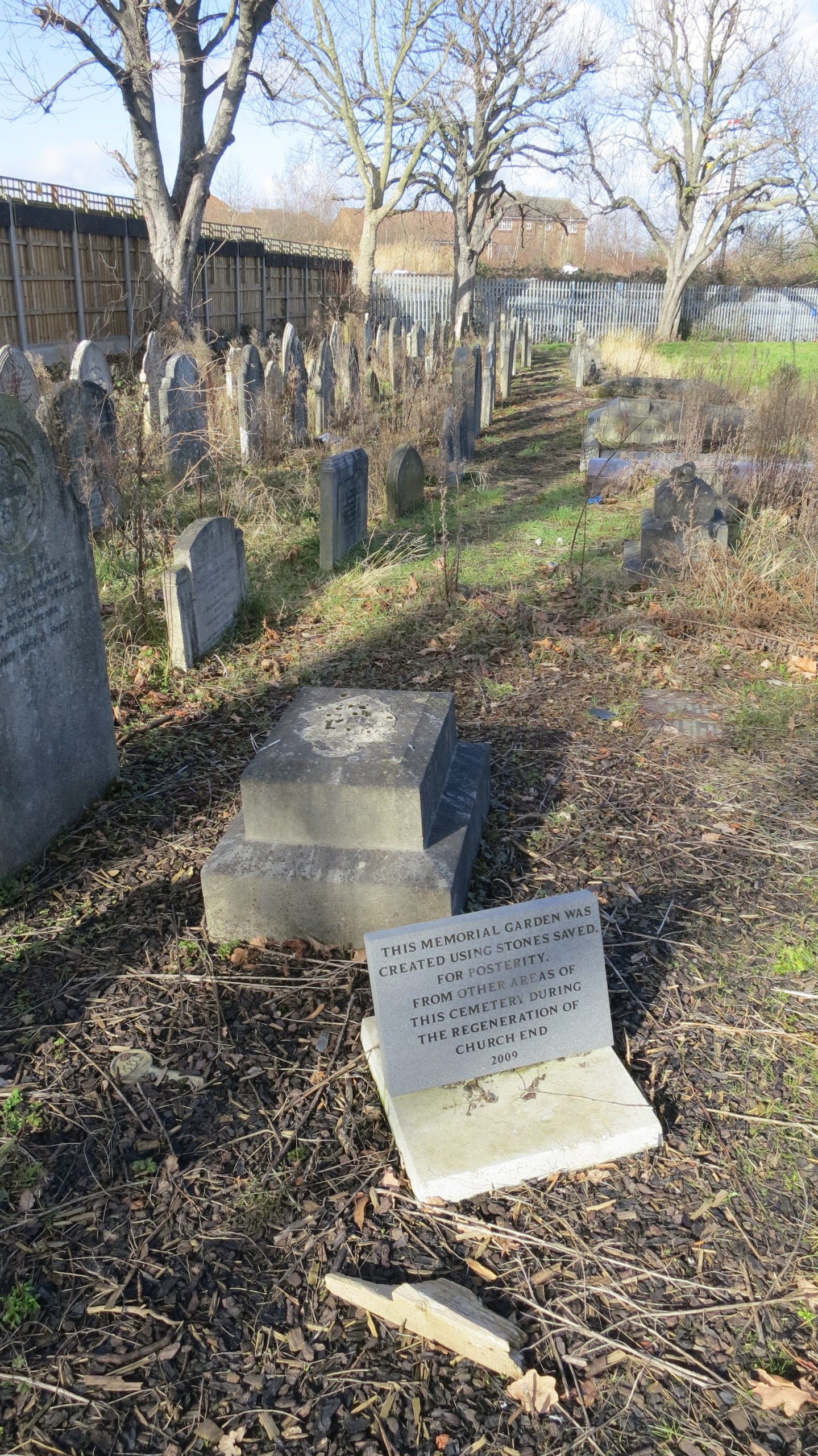Although I have been unable to confirm the nationality of a gang of childhood friends from the early 1950s, my recollection is that it was ‘the Czechs’ we did battle with in those days. For some reason Jackie and I got talking about this over coffee this morning. Refugee families had been housed in a large Victorian terrace in Worple Road. Somewhere nearby was a bomb site. My gang and a similar group of the incomers engaged in mock warfare. There were strict rules and no-one was ever hurt. On this patch of weed-covered rubble and debris each nationality built a den out of corrugated iron, wooden beams, old sinks, cisterns, and whatever else was available. We then hurled bricks and bits of concrete at each other’s structures until one collapsed, after which the winners crowed a bit, then we all shook hands and went home. It was absolutely forbidden to throw a missile at another boy. Language was a bit of a problem, but we managed to communicate rules and intent. There had not been enough postwar time for these sites to have been fully cleared, and they were most attractive playgrounds, no doubt full of enough hazards to have horrified today’s parents.
Four days ago, when Lydie was driving me to Bergerac airport, she described the beauty of morning mist rising from the local frosty fields on clear sunny days. In particular she had seen a scene where the tops of trees seemed to be emerging from a sea of water. As Jackie drove me to Southampton Parkway railway station for my London lunch date with Norman, we saw a similar phenomenon beside the M27.
On the train I was amused to hear a most original ring tone on the mobile phone of the man opposite. It was, in his little girl’s voice, ‘Dad, Dad, come on Dad, your phone’s ringing’. Yesterday Jackie had explained the significance of Charlie and Carlos in a TV auction programme, as being a jocular distinction between two men named Charles. So when the steward on board announced that there were two at-seat trollies in service, Peter being in charge of the rear five coaches, and Pedro of the front five, I had an idea what might be going on. When Peter arrived at my seat I asked him if this were so. He laughed and said he ‘couldn’t remember his name so [he] made something up’.
From Waterloo I walked my usual route to Green Park, where I boarded a Jubilee Line train to Neasden.  Helium-filled love hearts hanging from the avenue of naked trees approaching the London Eye were juxtaposed with that wheel’s capsules, just one of which seemed to reflect their colour.
Helium-filled love hearts hanging from the avenue of naked trees approaching the London Eye were juxtaposed with that wheel’s capsules, just one of which seemed to reflect their colour.
 Cruise vessels were filling with passengers at Westminster Pier where, for Norman’s 70th birthday celebrations I had boarded one with Jessica, and last year, for his 80th, with Jackie.
Cruise vessels were filling with passengers at Westminster Pier where, for Norman’s 70th birthday celebrations I had boarded one with Jessica, and last year, for his 80th, with Jackie.
 This year’s tourists are now becoming difficult to negotiate in this iconic area of London.
This year’s tourists are now becoming difficult to negotiate in this iconic area of London.
 In St James’s Park a slumbering goose had claimed a soporific shaft of sunlight.
In St James’s Park a slumbering goose had claimed a soporific shaft of sunlight.
On the tube a standing young man, plugged into one mobile device, peered down at that of a seated young woman who appeared to be scanning her messages. The rest of us were treated to a high volume African telephone conversation, the slightly robotic voice emanating from the mobile being even louder than that of our softer-spoken fellow traveller. On the return journey this effort was completely outbellowed by two Chinese men sitting on opposite sides of the carriage and several seats apart. Another African was loudly engaged in a telephone conversation, but at least he hadn’t got his device on hands-free mode.
 Having some time to spare I attempted to visit St Mary’s church, Willesden. Unfortunately, as is almost invariably the case in London churches now, the doors were all locked. I walked around the graveyard which was tidied up a few years ago. A stone tablet by a gathered-up collection of gravestones proclaims this fact. Although there are a very few memorials to more recent interments, most of those there are Victorian. The land is virtually an open-air museum of a long-gone section of nineteenth century London. With the church itself, which is rather older, a surprisingly picturesque scene greets anyone venturing off the High Road at Church End. From Neasden station one walks past a very gritty area dominated on each side by scrap metal dealers and waste skip depots; sorry-looking terraces of rented accommodation; a busy garage whose customers often cause hold-ups as they queue to enter; then ugly 60s office buildings and slightly more recent council estates; rubbish everywhere, including the front of the graveyard; rusted benches surrounded by dog-ends; cracked, broken, and sunken paving stones; parking meters; and the often nose-to-tail queues of London traffic belching out exhaust fumes. It is all very sordid and I usually walk past the church feeling sorry for it.
Having some time to spare I attempted to visit St Mary’s church, Willesden. Unfortunately, as is almost invariably the case in London churches now, the doors were all locked. I walked around the graveyard which was tidied up a few years ago. A stone tablet by a gathered-up collection of gravestones proclaims this fact. Although there are a very few memorials to more recent interments, most of those there are Victorian. The land is virtually an open-air museum of a long-gone section of nineteenth century London. With the church itself, which is rather older, a surprisingly picturesque scene greets anyone venturing off the High Road at Church End. From Neasden station one walks past a very gritty area dominated on each side by scrap metal dealers and waste skip depots; sorry-looking terraces of rented accommodation; a busy garage whose customers often cause hold-ups as they queue to enter; then ugly 60s office buildings and slightly more recent council estates; rubbish everywhere, including the front of the graveyard; rusted benches surrounded by dog-ends; cracked, broken, and sunken paving stones; parking meters; and the often nose-to-tail queues of London traffic belching out exhaust fumes. It is all very sordid and I usually walk past the church feeling sorry for it.  Today I was rewarded for taking a closer look.
Today I was rewarded for taking a closer look.
Norman provided a lunch of boiled bacon followed by jam roly-poly, accompanied by Carta Roja gran reserva 2006.
At Neasden station on the way back to Waterloo, a young woman was attaching a small black fascinator to one of her companions’ hair. The headdress was blown out of her hand and made its way like a speedy spider scampering across the platform to be retrieved just before it descended onto the lines. With much gaiety it was finally firmly fixed in place.
I arrived back at Southampton Parkway in time for Jackie to collect and drive me back to the lodge.